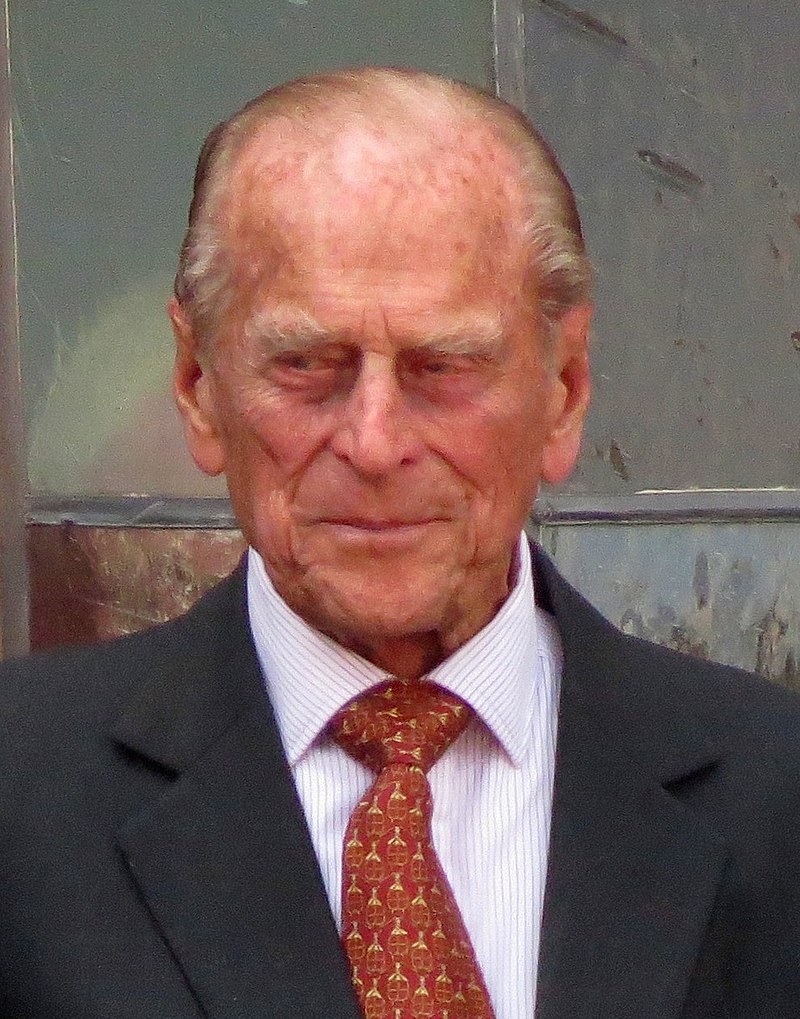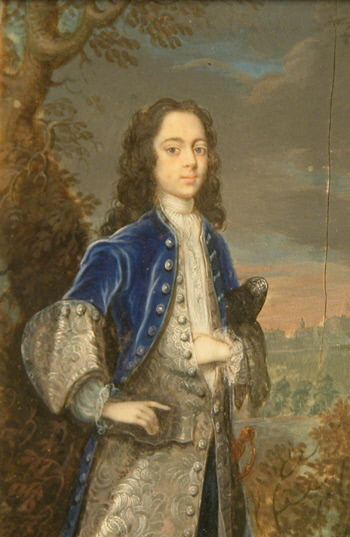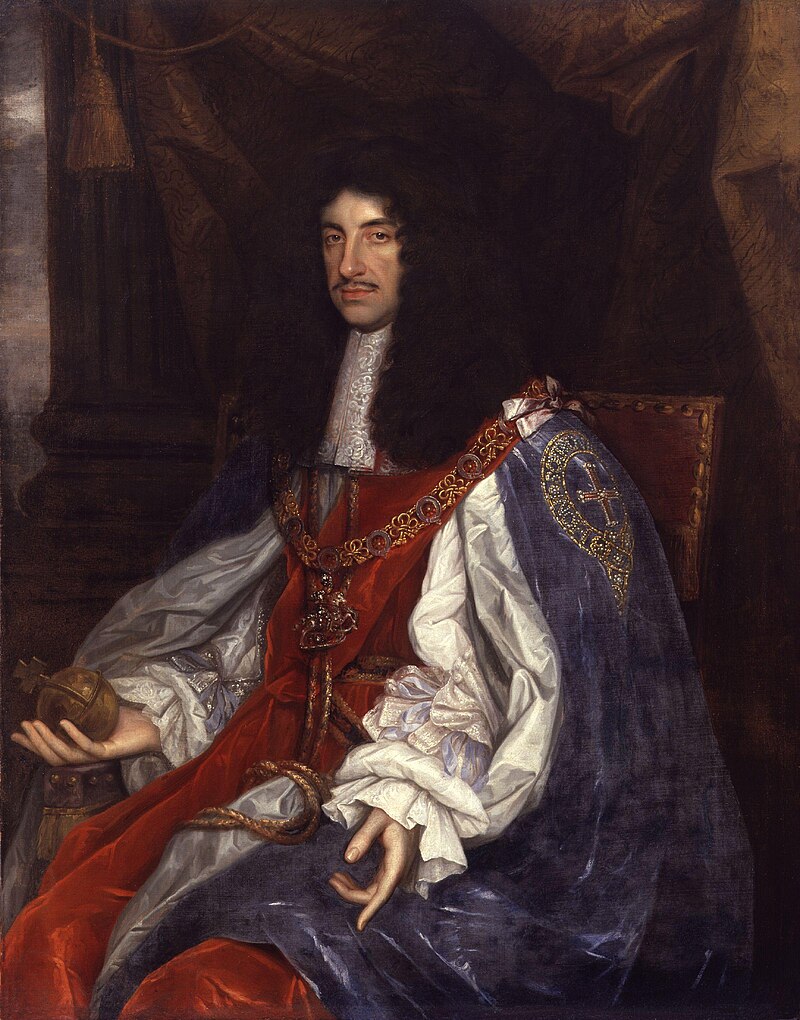© Unofficial Royalty 2024

Prince Philip, Duke of Edinburgh; Credit – Wikipedia
June 10, 1437 – Death of Joan of Navarre, Queen of England, second wife of King Henry IV of England, at Havering Palace in London, England; buried at Canterbury Cathedral in Canterbury, Kent, England
At the time of their marriage, a second marriage for both, Henry IV was about 37 and Joan was about 35, but they had no children together. Joan got along well with her stepchildren especially Henry of Monmouth, Prince of Wales, the future King Henry V of England. Henry IV died in 1413 and King Henry V held his stepmother in the highest regard as shown by his appointing “his dearest mother” as regent several times. Joan lived quietly through the reign of King Henry V and into the reign of his son King Henry VI. She died at her favorite residence, Havering Palace in the village of Havering-atte-Bower in what is now the London Borough of Havering, and was buried with King Henry IV at Canterbury Cathedral.
Unofficial Royalty: Joan of Navarre, Queen of England
June 10, 1688 – Birth of James Francis Edward Stuart, “The Old Pretender”, son of King James II of England, at St. James Palace in London, England
Upon the death of his exiled father in 1701, James was recognized by King Louis XIV of France as the rightful heir to the English and Scottish thrones. Spain, the Vatican, and Modena recognized him as King James III of England and VIII of Scotland and refused to recognize William III, Mary II, or Anne as legitimate sovereigns. As a result of James claiming his father’s lost thrones, he was attainted for treason in 1702 and his titles were forfeited under English law. After James II lost his throne, the Jacobite (from Jacobus, the Latin for James) movement formed. The goal of the Jacobites was to restore the Roman Catholic Stuart King James II of England/VII of Scotland and his heirs to the thrones of England and Scotland. 1719, James Francis Edward Stuart married Maria Clementina Sobieska. The couple had two sons: Charles Edward Stuart, The Young Pretender, Bonnie Prince Charlie and Henry Benedict Stuart, Cardinal of the Roman Catholic Church. After James’ failures to regain the throne, attention fell upon his son Charles Edward, The Young Pretender, whose Jacobite Rising of 1745 culminated in the final devastating loss for the Jacobites at the Battle of Culloden. James Francis Edward Stuart died at his home, the Palazzo Muti in Rome, on January 1, 1766, aged 77.
Unofficial Royalty: James Francis Edward Stuart
Unofficial Royalty: The Jacobite Succession – Pretenders to the British Throne
June 10, 1711 – Birth of Princess Amelia of Great Britain, daughter of King George II of Great Britain, at Herrenhausen Palace in Hanover, Kingdon of Hanover, now in Lower Saxony, Germany
Full name: Amelia Sophia Eleanora
Amelia never married. After the death of her mother in 1737, Amelia became the constant companion to her father. She also acted as hostess for her unmarried brother Prince William, Duke of Cumberland, who had a career in the Royal Army. Amelia followed her brother’s military campaigns and was always quite worried about him when he was at the front. Amelia was the last surviving child of her parents and lived for the first twenty-six years of the reign of her nephew King George III whose father Frederick, Prince of Wales had predeceased his father King George II.
Unofficial Royalty: Princess Amelia of Great Britain
June 10, 1713 – Birth of Princess Caroline of Great Britain, daughter of King George II of Great Britain, at Herrenhausen Palace in Hanover, Kingdon of Hanover, now in Lower Saxony, Germany
Full name: Caroline Elizabeth
Princess Caroline was not only her mother’s namesake but her favorite child. She was known in the family for telling the truth and was always consulted when there were disagreements between the royal siblings because she could be counted on telling exactly what happened. After the marriage of her eldest sister Anne to Willem IV, Prince of Orange, Caroline became her mother’s main confidant and she remained so for the rest of her mother’s life. Princess Caroline never married. When her mother died in 1737, Queen Caroline expressly left her three youngest children, all teenagers, in the care of her daughter Caroline.
Unofficial Royalty: Princess Caroline of Great Britain
June 10, 1811 – Death of Karl Friedrich, Grand Duke of Baden in Karlsruhe, Grand Duchy of Baden, now in Baden-Württemberg, Germany; buried in St. Michael’s Church in Pforzheim, Grand Duchy of Baden, now in Baden-Württemberg, Germany
Originally, Margrave of Baden, Karl Friedrich was the first Grand Duke of Baden. In 1805, he fought on the side of the French, gaining territories from the Austrian Empire. In 1806, he joined the Confederation of the Rhine, and upon the end of the Holy Roman Empire, Karl Friedrich declared himself sovereign, as Grand Duke of the newly created Grand Duchy of Baden. He continued to support the French, and in the Peace of Vienna in 1809, and gained more territory from the Kingdom of Württemberg. Through his efforts, Karl Friedrich had quadrupled the size of the Grand Duchy of Baden by the end of his reign.
Unofficial Royalty: Karl Friedrich, Grand Duke of Baden
June 10, 1835 – Birth of Ferdinando IV, the last Grand Duke of Tuscany in Florence, Grand Duchy of Tuscany, now in Italy
Full name: Ferdinando Salvatore Maria Giuseppe Giovan Battista Francesco Luigi Gonzaga Raffaello Ranieri Gennaro
In 1859, the Grand Ducal family was forced to flee Florence because of the wars caused by the Italian unification movement, and the family took refuge in Austria. On July 21, 1859, Leopoldo II abdicated in favor of his son Ferdinando IV who was Grand Duke of Tuscany in name but never really reigned. Ferdinando was unable to return to Florence to claim his throne, and an elected Tuscan National Assembly formally deposed him on August 16, 1859. Ferdinando hoped to recover his throne because France and Austria had promised to recognize his rights. However, neither France nor Austria was willing to take any steps to bring about his restoration. The Grand Duchy of Tuscany was annexed to the Kingdom of Sardinia in 1860, as a part of the unification of Italy. In 1861, Vittorio Emanuele II, King of Sardinia was proclaimed the first King of the new, united Kingdom of Italy, and Ferdinando’s hopes to reclaim the throne were ended. Ferdinando spent the rest of his life in exile in the Austrian-Hungarian Empire.
Unofficial Royalty: Ferdinando IV, Grand Duke of Tuscany
June 10, 1838 – Birth of Marguerite Bellanger, mistress of Napoleon III, Emperor of the French, born Julie Justine Marine Leboeuf on June 10, 1838, in Saint-Lambert-des-Levées, Maine-et-Loire, France
Using the stage name Marguerite Bellanger, she had a brief career on the Paris stage before she was noticed by Napoleon III, Emperor of the French. She was the mistress of Napoleon III from 1863 until 1870 when he was deposed and exiled. In February 1864, Marguerite gave birth to a son Charles Jules Auguste François Marie Leboeuf, who was in all likelihood, the Emperor’s son. With the Emperor’s exile in 1870, his affair with Marguerite ended. In 1872, she married William Kulbach, Baronet, a Captain in the British Army and the couple lived in England and France. Marguerite Bellanger, aged 48, died on November 23, 1886, at the Château de Villeneuve-sous-Dammartin, near Meaux, France.
Unofficial Royalty: Marguerite Bellanger, Mistress of Napoleon III, Emperor of the French
June 10, 1876 – Birth of Wilhelm Ernst, Grand Duke of Saxe-Weimar-Eisenach in Weimar, Grand Duchy of Saxe-Weimar-Eisenach, now in Thuringia, Germany
Full name: Wilhelm Ernst Karl Alexander Friedrich Heinrich Bernhard Albert Georg Hermann
From 1897 until 1909, Wilhelm Ernst was also the heir presumptive to the Dutch throne. King Willem III of the Netherlands died in 1890, leaving the throne to his ten-year-old daughter Wilhelmina. As a grandson of Princess Sophie of the Netherlands, the younger sister of King Willem III, Wilhelm Ernst was the next person in the line of succession. This caused great panic in the Netherlands, where the people feared German influence or the potential of being annexed by Germany. Several attempts were made to change the succession, or limit Wilhelm Ernst to holding only one throne should he succeed in the Netherlands. The succession crisis was lessened in 1909 when Wilhelmina gave birth to her daughter, the future Queen Juliana. Wilhelm Ernst was the last Grand Duke of Saxe-Weimar-Eisenach, abdicating on November 9, 1918.
Unofficial Royalty: Wilhelm Ernst, Grand Duke of Saxe-Weimar-Eisenach
June 10, 1897 – Birth of Grand Duchess Tatiana Nikolaevna of Russia, daughter of Nicholas II, Emperor of All Russia, at Peterhof near St. Petersburg, Russia
Tatiana, like her sister Olga, was a good student but worked harder and was more dedicated. She had a great talent for sewing, embroidery, and crocheting. Tatiana was practical, had a natural talent for leadership and so she was nicknamed “The Governess” by her sisters. She was closer to her mother than any of her sisters and was considered by many to be Empress Alexandra’s favorite daughter. Therefore, Tatiana was the one sent as the sisters’ representative when they wanted something from their parents.
Unofficial Royalty: Grand Duchess Tatiana Nikolaevna of Russia
June 10, 1921 – Birth of Prince Philip, Duke of Edinburgh, husband of Queen Elizabeth II of the United Kingdom, born Prince Philippos of Greece and Denmark at Villa Mon Repos in Corfu, Greece
In 1939, during Philip’s first year at the Royal Naval College Dartmouth, the British Royal Family: King George VI, his wife Queen Elizabeth, and their daughters Princess Elizabeth, and Princess Margaret, made a visit. Because of his family relationship (Elizabeth and Philip are second cousins once removed through their descent from King Christian IX of Denmark and third cousins through their descent from Queen Victoria), Philip was asked to join the party to entertain the two young princesses. Elizabeth and Philip had already met in 1934 when she was a bridesmaid at the wedding of her uncle, The Duke of Kent, to Philip’s first cousin, Princess Marina of Greece. However, it was at Dartmouth that the 13-year-old Elizabeth truly took notice of her nearly 18-year-old cousin. It is said that Elizabeth was instantly smitten with the dashing Philip and the two began a correspondence that quickly blossomed into a romance.
Unofficial Royalty: Prince Philip, Duke of Edinburgh
June 10, 1967 – Wedding of Queen Margrethe II of Denmark and Henri de Laborde de Monpezat at the Church of Holmen in Copenhagen, Denmark
While studying at the London School of Economics in 1965, Margrethe was invited to a dinner at the French embassy. As an employee of the embassy at the time, Henri was expected to attend but was ambivalent about meeting the Danish princess by whom he was to be seated. Henri later said that to his surprise he found Margrethe interesting from their first meeting, but was a bit intimidated by her and said little during the dinner as a result. Margrethe said she had no real impression of Henri from their first meeting. Margrethe and Henri were both guests at a wedding shortly after the first dinner. The two chatted at the wedding reception and on the plane ride back to London, as they were seated together once again. Upon their return to London, Margrethe and Henri gradually began seeing more and more – and growing mutually fonder – of one another. The couple kept a low profile for more than a year, made easier by the fact that Margrethe’s anonymity in Britain. The couple was so private that upon the news that an engagement announcement was imminent, most Danes had no idea their princess had been exclusively dating anyone.
Unofficial Royalty: Wedding of Queen Margrethe II of Denmark and Henri de Laborde de Monpezat
June 10, 1974 – Death of Prince Henry, Duke of Gloucester at Barnwell Manor in Northamptonshire, England; buried at the Royal Burial Ground, Frogmore in Windsor, England
In 1965, while driving back to his home Barnwell Manor after attending the funeral of Winston Churchill, the Duke suffered a stroke causing a car accident. The Duchess suffered injuries to the face which required 57 stitches. Three years later, the Duke suffered another stroke which left him incapacitated. The Duchess continued to talk and read to her husband hoping he could hear and understand. She never did tell him about the death of their son in a plane crash, but she thought he understood from watching television.
Unofficial Royalty: Prince Henry, Duke of Gloucester
June 10, 1976 – Birth of Georg Friedrich, Prince of Prussia, current pretender to the Prussian throne, and head of the Prussian branch of the House of Hohenzollern
Full name: Georg Friedrich Ferdinand
Georg Friedrich, Prince of Prussia is the current pretender to the Prussian throne and head of the Prussian branch of the House of Hohenzollern. He is the direct male-line descendent of Prussia’s last King (and German Emperor), Kaiser Wilhelm II.
Unofficial Royalty: Georg Friedrich, Prince of Prussia
June 10, 1982 – Birth of Princess Madeleine of Sweden, daughter of King Carl XVI Gustaf of Sweden at Drottningholm Palace in Drottningholm, Sweden
Full name: Madeleine Thérèse Amelie Josephine
Madeleine is the youngest of the three children of King Carl XVI Gustaf of Sweden. In 2013, she married Christopher O’Neill, a British-American businessman. The couple has three children. Madeleine has a very active role in the World Childhood Foundation, founded by her mother Queen Silvia in 1999 to reach and support children at risk around the world. After their marriage, Madeline and Christopher lived in New York City, and their first child was born there. In early 2015, they returned to Sweden. In August 2018, it was announced that Madeleine and her family would be moving to Florida, in the United States, where Madeleine has continued her work with the World Childhood Foundation. In March 2023, it was announced that the family would move back to Sweden in August 2023 but the move was postponed until 2024.
Unofficial Royalty: Princess Madeleine of Sweden
June 10, 1993 – Wedding of King Abdullah II of Jordan and Rania al-Yasin at the Zahran Palace in Amman, Jordan
In January 1993, a friend of Rania took her to a dinner party hosted by Prince Abdullah’s sister. “The minute Rania walked in, I knew it right there and then,” said Abdullah in a 2005 interview with People magazine. “It was love at first sight.” A whirlwind courtship began. Abdullah took Rania on motorbike rides across the desert, waterskiing on the Red Sea, and flying in helicopters. After a courtship of just two months, King Hussein reportedly drove his son to the home of Rania’s parents so Abdullah could propose. With King Hussein and her family looking on, Rania accepted.
Unofficial Royalty: Wedding of King Abdullah II of Jordan and Rania al-Yasin
This article is the intellectual property of Unofficial Royalty and is NOT TO BE COPIED, EDITED, OR POSTED IN ANY FORM ON ANOTHER WEBSITE under any circumstances. It is permissible to use a link that directs to Unofficial Royalty.

















